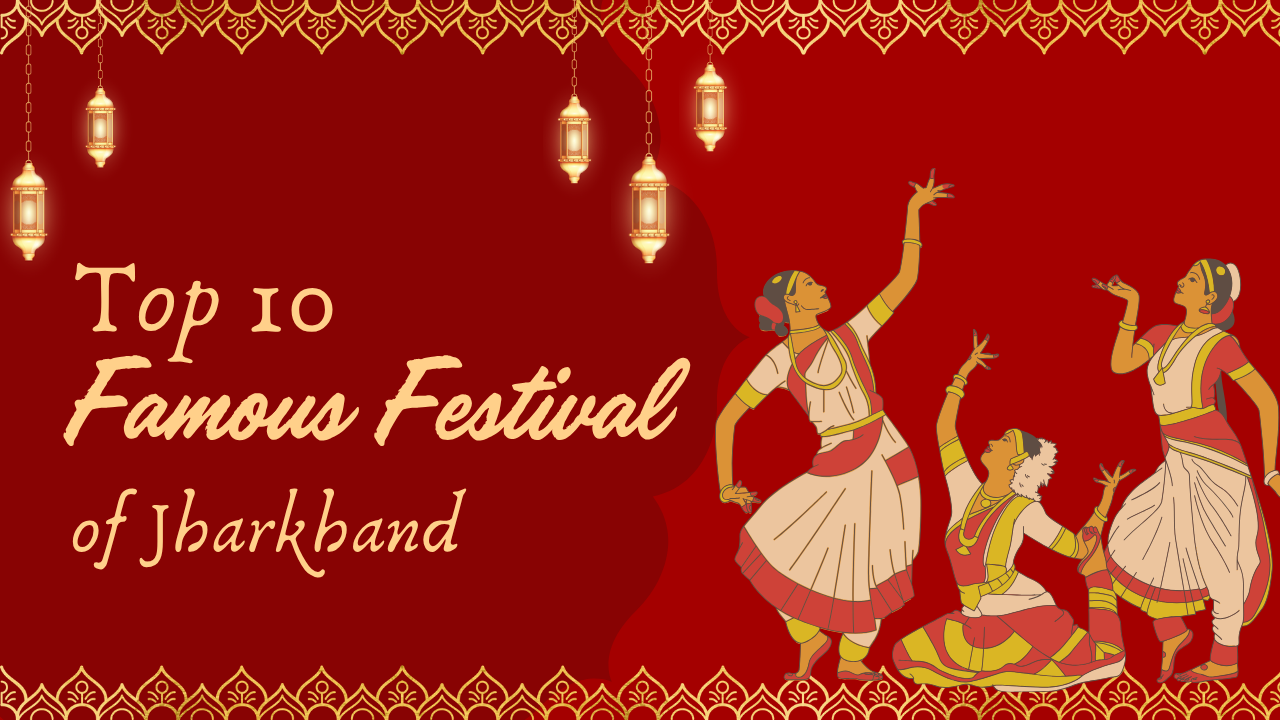Jharkhand is known for its crowded forests, buzzing racial culture and deep-rooted traditions. It’s a place where every festival has a lot of cultural and deep meaning. While I was doing my research. I realized that the prominent celebration of Jharkhand really shows how united the people are. While also featuring their differences. These festivals are further than just celebrations. They are a way to commend nature, gods and ancestors.
In this blog, I have listed the Top 10 Famous Festival of Jharkhand that perfectly display the soul and beautifulness of this amazing state.
1. Sarhul – The Festival of Flowers and Nature
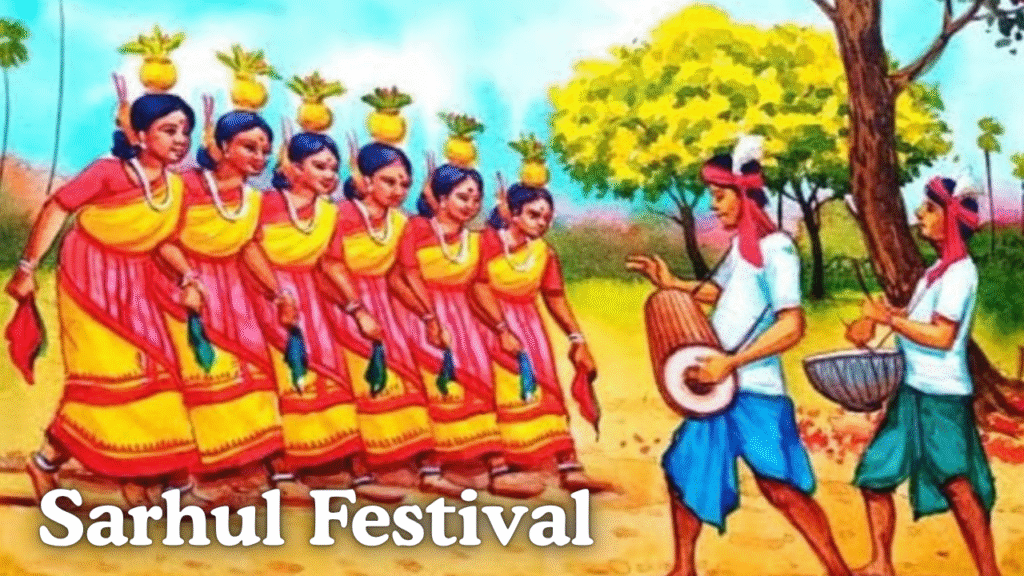
Sarhul is an incredibly major festival for the ethnic people of Jharkhand, and it is mainly famous by the Oraon, Munda, and Ho communities. It targets the start of the new year and the arrival of spring.
- It is normally held in March or April.
- The festival is grounded on the belief in nature. Especially the Sal tree and local village gods.
- The main activities include customary dances, songs and big meals collected by the community.
During the festival, people bring bloom to the Sal tree and pray for a good crop and pacifistic life. It displays how closely the tribal people are integrated to the natural world.
2. Karma – The Festival of Brotherhood and Prosperity
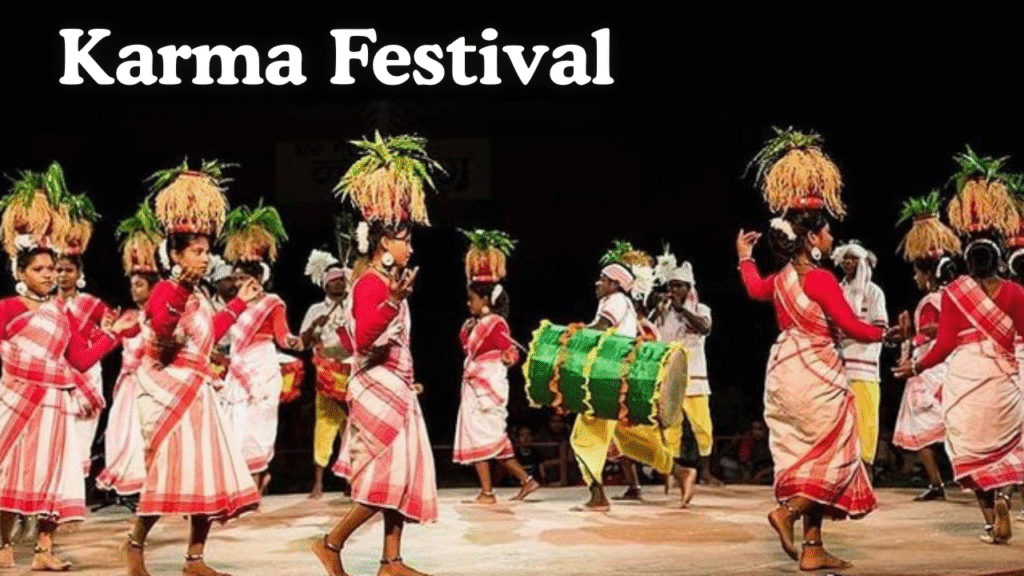
The Karma festival is celebrated with excellence by the tribal town in Jharkhand. It is steadfast to Karam Devta, the god of youth and power.
- Time of celebration: August or September
- Main Ritual: drilling and reverence a branch of the Karam tree
- Highlights: Folk songs, tribal dances and group bless
The festival sell unity, love and regard for nature. Men and women dance around the Karam tree. Vocalize conventional songs that mirror joy and togetherness.
3. Chhath Puja – Worship of the Sun God
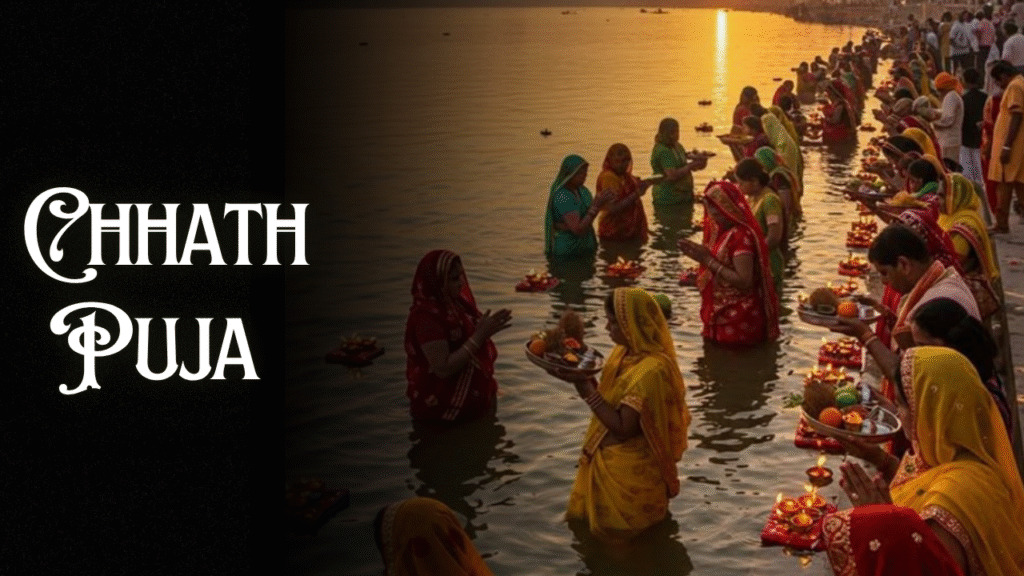
Among the well-known festivals in Jharkhand, Chhath Puja is particularly famous. This festival is faithful to lord surya, the sun god and is primarily observed along riverbanks and ponds.
- Time of Celebration: Six afternoons after Diwali (October–November)
- Main Ritual: Offering petition to the environment and rising sun
- Highlights: Devotees stand in water, fast and give fruits, sugarcane and thekua
Chhath Puja describes purity, devotion and thanks. During this festival, the gorgeous ghats of Ranchi and Hazaribagh glow with diyas and follower with songs.
4. Sohrai – The Festival of Cattle and Harvest
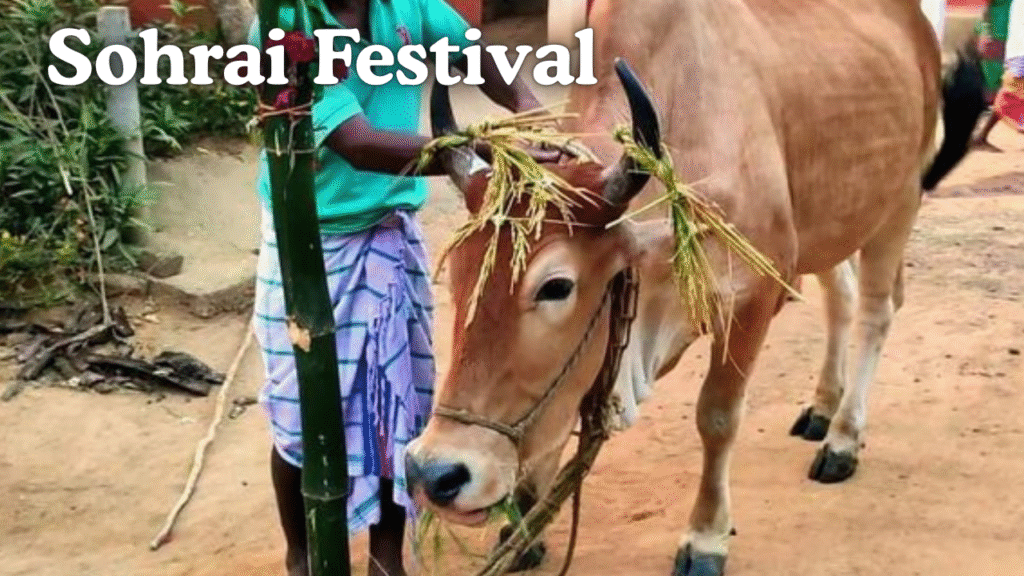
Sohrai is a harvest festival mostly famous by the tribal and farming people in Jharkhand. It occurs around the same time as Diwali and is a way to show thanks to the proletariat and nature for assisting with farming.
- Time of Celebration: October or November
- Main Ritual: Cattle are draped and given food
- Highlights: Women create wall canvas using natural colors during Sohrai
This celebration concurrently involves art and farming. Showing respect for the environment and the creatures that help humans.
5. Tusu Parab – The Festival of Young Girls
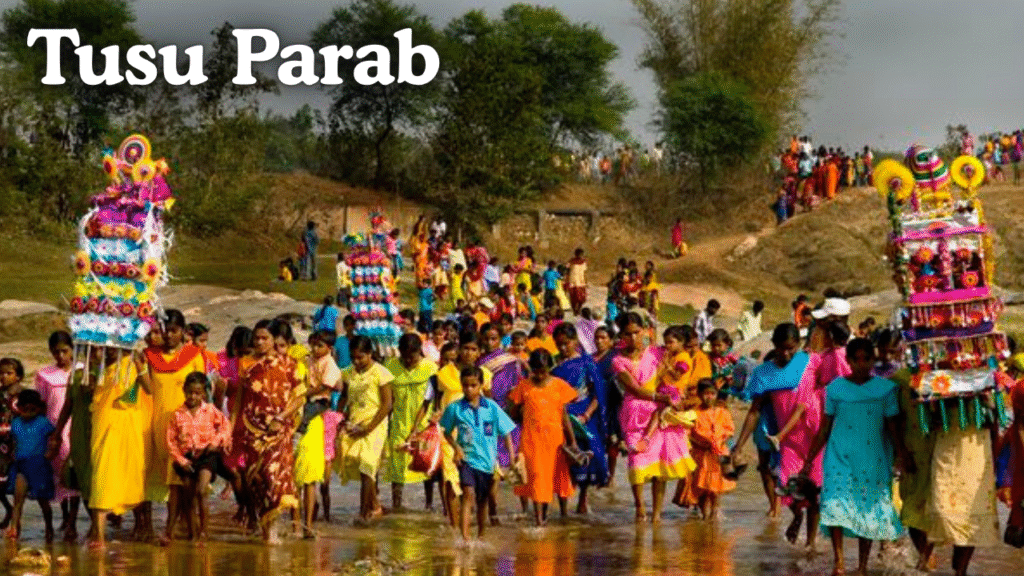
Tusu Parab is an energetic crop festival that takes place mostly in the southern region of Jharkhand. It is steadfast to Goddess Tusu, who be for simplicity, purity, and good fortune.
- The festival is usually famous in January, after the Poush month crop is done.
- The main activity is chanting songs and petitioning Goddess Tusu.
- The festival attributes traditional folk music, potential bamboo crafts and arrival simultaneously with family and friends.
It is a time to integrity the hard work of agriculturalists and to celebrate the joy of starting fresh.
6. Hal Punhya – The Beginning of the Agricultural Year
Punhya targets the start of the agrarian cycle in Jharkhand. Farmers execute rituals to integrity their land and farming tools before the plowing starts, praying for a plentiful harvest.
- Time of Celebration: January or February
- Main Ritual: Ritual cultivate of the fields
- Highlights: Fairs, prayers and neighborhood feasts
This festival attractively shows the agrarian lifestyle and deep appreciation for the soil that sustains life.
7. Jitiya – The Festival of Mothers and Sons
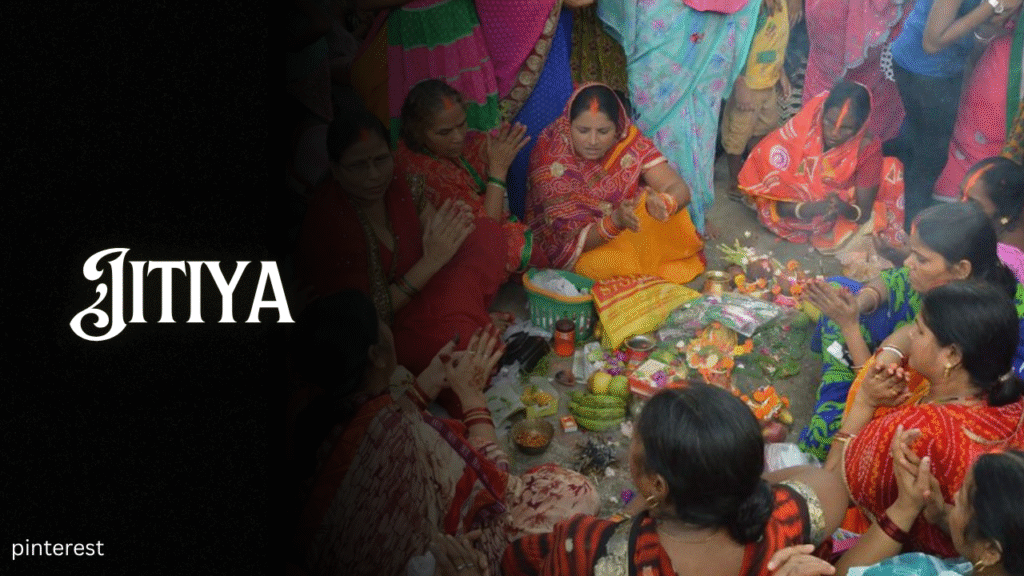
Hal Punhya marks the beginning of the farming season in Jharkhand. Farmers pray to their land and agriculture tools before they start plowing. Hoping for a good crop throughout the year.
- Time of Celebration: January or February
- Main Ritual: Special rake ceremony in the fields
- Highlights: Fairs, prayers and city meals
This festival shows how historic farming is in the lives of people and how much they respect the earth that supports them.
8. Ashadhi Puja – Gratitude for Rain and Fertility
Ashadhi Puja is a celebration held to express thanks to the rain gods for a good monsoon flavor and to pray for a successful harvest. It is one of the most customary agrarian festivals in Jharkhand.
It is renowned in June or July.
The main activity involves offering sacrifices and prayers to local gods.
The festival includes folk dances, singular rituals, and the offering of grains.
This celebration mirrors the community’s respect for nature’s ability to furnish life and sustenance.
9. Shravani Mela – A Month-Long Devotional Journey
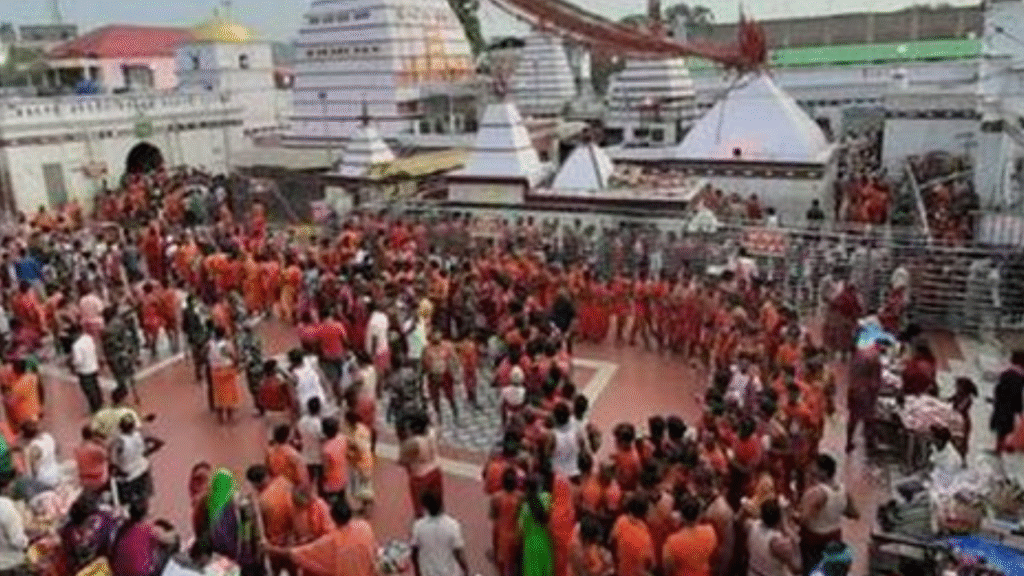
The Shravani Mela is one of the sizable spiritual incidents in Jharkhand particularly in Deoghar. People who succeed this belief, shout kanwariyas, stroll barefoot and transport religious water from the Ganga River to offer it at the Baidyanath Dham Temple.
- Celebration Time: July to August (Shravan month)
- Main Ritual: sacrifice Ganga water to Lord Shiva
- Highlights: Massive pilgrimages, sing of “Bol Bam” and spiritual devotion
This festivity brings millions of worshippers from all over India and the atmosphere is filled with devotion and excitement.
10. Shiva Maha Aarti – The Grand Worship of Lord Shiva
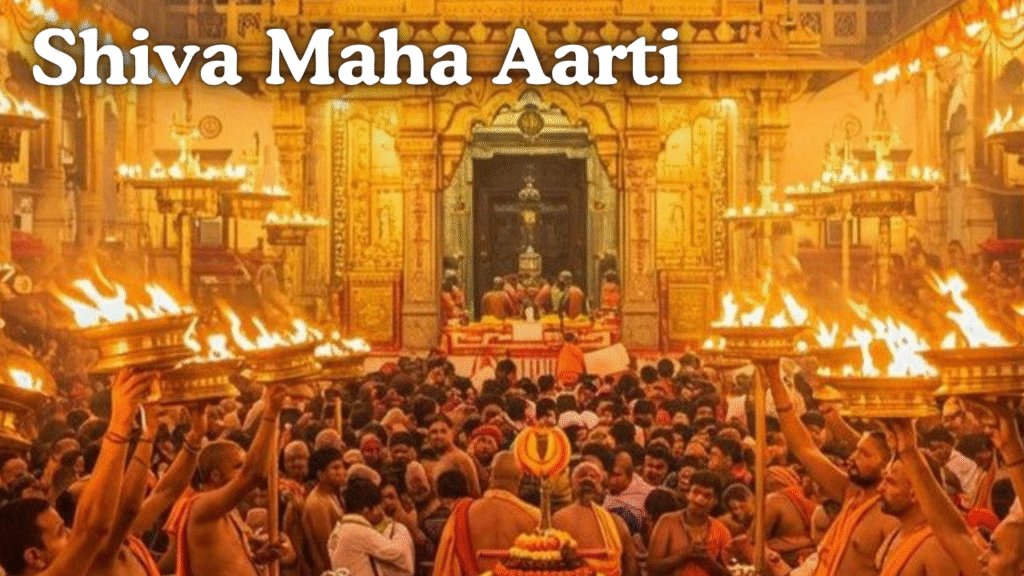
Shiva Maha Aarti is a glorious celebration of the honesty of Lord Shiva. Usually held during Mahashivratri. The temples of the state, especially Baidyanath Dham in Deoghar. Have their own way of leaning to Lord Shiva that picture a lot of people.
- The time of the occurrence is around February or March.
- The key part of the celebration contains a huge aarti and sacrifice rituals to Lord Shiva.
- emphasize religious songs, ornamental temples and prayers that go all through the night.
The sight of multitude of reverence singing together during the aarti is very moving and incorporeal enriching.
Conclusion: The Cultural Soul of Jharkhand
Through my research, I establish that the celebrated festival of Jharkhand handsomely blends spirituality, agriculture and tribal traditions. Each bless from Sarhul’s natural devotion to Shravani Mela’s divine faith. Characterize the people’s bond with their land, gods and community.
If you ever wish to expertise India’s raw and diverse culture. Jharkhand is a perfect destination. Its festivals are not just events. They are chords that bring people simultaneously in joy, devotion and gratitude.

